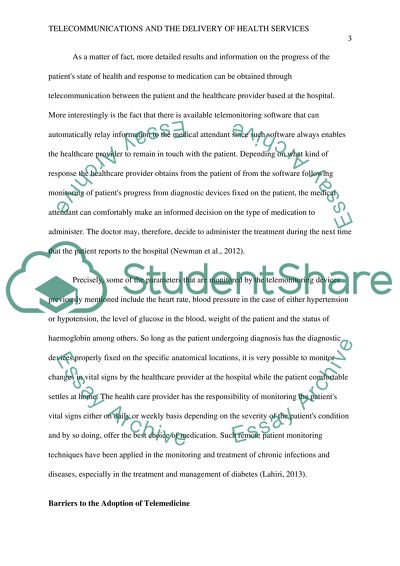Cite this document
(“The Delivery of Health Services Essay Example | Topics and Well Written Essays - 2000 words”, n.d.)
The Delivery of Health Services Essay Example | Topics and Well Written Essays - 2000 words. Retrieved from https://studentshare.org/nursing/1700027-telecommunication-technology-the-delivery-of-health-services
The Delivery of Health Services Essay Example | Topics and Well Written Essays - 2000 words. Retrieved from https://studentshare.org/nursing/1700027-telecommunication-technology-the-delivery-of-health-services
(The Delivery of Health Services Essay Example | Topics and Well Written Essays - 2000 Words)
The Delivery of Health Services Essay Example | Topics and Well Written Essays - 2000 Words. https://studentshare.org/nursing/1700027-telecommunication-technology-the-delivery-of-health-services.
The Delivery of Health Services Essay Example | Topics and Well Written Essays - 2000 Words. https://studentshare.org/nursing/1700027-telecommunication-technology-the-delivery-of-health-services.
“The Delivery of Health Services Essay Example | Topics and Well Written Essays - 2000 Words”, n.d. https://studentshare.org/nursing/1700027-telecommunication-technology-the-delivery-of-health-services.


